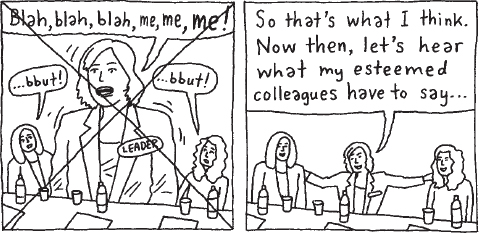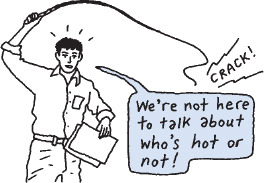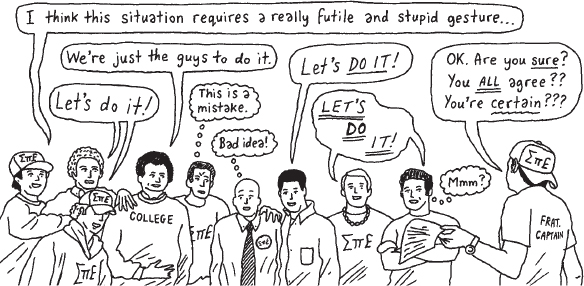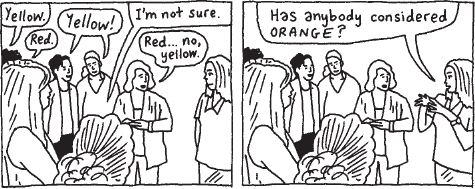Leading Meetings
Printed Page 628
Effective group leaders conduct meetings in ways that enable members to work together productively, contribute their ideas, and make well-informed decisions. If you’re the leader of a group, consider these tips for facilitating group meetings.
Address Procedural Needs. Where and when will meetings take place? Who will start meetings and record notes? And how will notes be circulated to members who could not attend a particular meeting?
Model the Behavior You Expect. Avoid interrupting others or dismissing their questions or comments. Make group members feel they can interact comfortably with you. And resist any urge to dominate discussions or decisions.
Facilitate Discussion. Ensure that all members of your group have the opportunity to participate in each discussion. If some group members are not speaking during a meeting, strive to bring them into the discussion (“Anil, what do you think?” or “That’s a good point, Sarah—you’ve clearly researched this carefully. But let’s also give Tyler a chance to share his ideas”). Although it’s important to contribute when you have an idea that nobody else has raised, try to let other members speak first. If you make your position known early, members may hesitate to contradict you.

Keep Members on Task. If the discussion begins to stray from the item under consideration, keep members on task in a friendly manner. For example, “I agree with Harry that our department’s holiday party is going to be a blast. But let’s talk about how we’re going to tackle reserving the space for the event.”


Help Members Avoid Groupthink. Groupthink is members’ tendency to accept ideas and information uncritically because of strong feelings of loyalty or single-mindedness within the group.2 Groupthink erodes the lively and open exchange of ideas necessary for informed decisions. Worse, it also suggests that being increasingly amiable with other members of a group can eliminate independent, critical thinking, and replace it with groupthink.3 If one person advocates a course of action in your group and everybody else nods in agreement, try to broaden the discussion before moving the group toward making a final decision. For instance, ask a particularly insightful participant if he or she can think of any potential risks to the proposed course of action. If nobody is willing to offer any reservations, consider raising some concerns yourself: “I like Sangeeta’s idea, but let me play devil’s advocate for a minute. . . .” Be sure that the group has considered the pros and cons of the proposed options before selecting one.


Facilitate Decisions. When it seems that members of your group have thoroughly discussed the issue at hand, help them come to a decision. As leader, you will participate in the final decision, but your leadership role does not entitle you to make the decision for the group. In other words, never use your power to manipulate the group. Once the decision has been made, ensure that it is recorded, and then move the group on to the next issue. Revisit decisions only when new circumstances make the original decision unfeasible.
Help Organize the Group’s Presentation. Does your group need to present its conclusions? If so, who will serve as the speaker or speakers? How will the presentation be framed to best meet the audience’s needs? As leader, you don’t necessarily need to make all the decisions yourself, but you do need to coordinate the decisions on these topics.